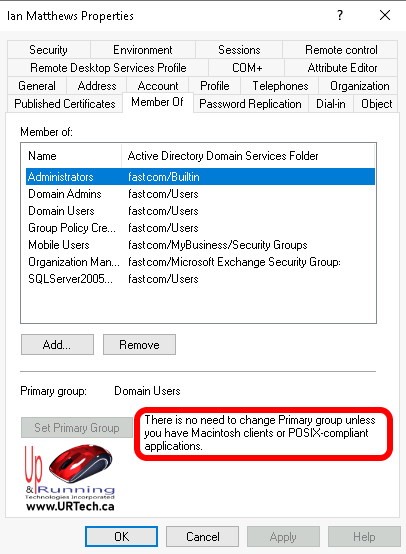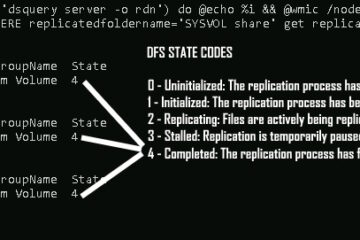POSIX is an acronym for Portable Operating System Interface and it is simply a standard that defines communications between applications, mostly running on Linux. In tech speak we call it an API or Application Protocol Interface.
POSIX In Windows?
Generally, unless you are a developer, you don’t need to care about or even understand POSIX. There are a few exceptions to that rule, for instance, we wrote an article more than a decade ago explaining how to use a POSIX command to remove files and folders that are not Windows compliant but somehow managed to be copied to your Windows drives.
Also, Windows Server Administrators may have noticed ACTIVE DIRECTORY USERS AND COMPUTERS > USER > MEMBER OF tab:
SET PRIMARY GROUP: There is no need to change primary group unless you have Macintosh clients or POSIX-compliant applications
That setting allows Windows Server Administrators to set the group that POSIX cares about when a Linux application is trying to deal with Windows credentials.
Microsoft POSIX subsystem was an optional Windows subsystem included in Windows NT operating systems but it was removed in Windows 2000. Today Microsoft supports POSIX in several ways including Windows Subsystem For Linux that allows Debian, Ubuntu and SUSE to run natively in Windows 10 and 11.
A Very Brief History of POSIX
Back in the 1970’s a computer program would have be re-written for every computer model and operating system. POSIX drastically lowered development costs and eliminated many errors by standardizing the way software was written.
The first version the POSIX standard was developed in 1984 but did not become an official standard until 1988 when it was accepted by IEEE and ISO (International Standards Organization) but is now managed by the Austin Open Group. It has been revised and enhanced since, most recently in 2017 which now includes these four elements:
- Base Definitions: Common definitions for the specifications, including information about terms, concepts, syntax, service functions and command-line
- System Interfaces: Details about interface-related terms and concepts, and defines the functional interfaces available to applications accessing POSIX-conformant systems.
- Shell & Utilities: Describes the commands and utilities available to applications accessing POSIX-conformant systems, including the command language used in those systems.
- Rationale: Historical information about the standard’s contents and why certain features were added or removed.
What Operating Systems Use POSIX?
Nearly all operating systems, even Microsoft Windows and Google Android, provide some support for POSIX but the following OS’ are POSIX Certified as of 2023.
- AIX
- EulerOS
- HP-UX
- INTEGRITY
- macOS (since 10.5 Leopard)
- OpenServer
- UnixWare
- VxWorks
- z/OS



0 Comments